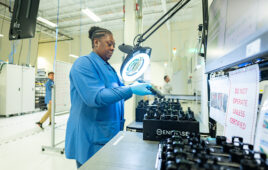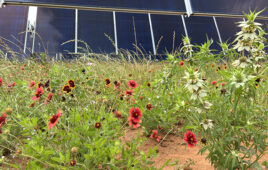Here we are. One year after the U.S. federal government initiated tariffs on imported crystalline silicon solar cells and panels. This past year we saw a 30% tariff on all imported panels — regardless of country of origin (with a few minor exceptions). The tax drops to 25% in 2019, then to 20% in 2020 and 15% in 2021 before finally ending. If that wasn’t bad enough, the industry is also faced with steel and aluminum tariffs, and a 10% tariff on Chinese inverters that could rise to 25% after negotiations end in March.
And although the effect of the many tariffs hasn’t been as crippling to the U.S. solar industry as once feared, no one wants to pay enormous taxes if it can be avoided. Accounting and consulting firm BDO provided Solar Power World with some advice for solar professionals. Tim Clackett, assurance partner and head of BDO’s cleantech initiative in the Western region, and Damon Pike, international tax principal in BDO’s Customs and International Trade Services practice, offered some insight into how the tariffs have affected the solar industry and how solar installers and manufacturers can maneuver them.
SPW: Do we need to keep worrying about solar panel tariffs in 2019?

Clackett: Prices in the solar industry have been declining over the years. With the 201 tariffs [on solar panels] being a percentage tariff, and in the market where prices are inevitably declining, the impact may be slightly less than one would imagine. The industry has been used to a fair amount of government involvement in terms of both credit incentives and tariffs over the years, so this is just another element where companies are mindful of what is happening.
I think there’s still an underlying trend for growth promoted by states. We have the renewable portfolio standards requiring a certain percentage of power to be generated from renewable sources. I don’t think those things are going to change. We still see growth in the solar industry. The tariffs are somewhat of a blip. They can have a positive impact on manufacturing domestically and a potentially negative impact on our installers, but because of the wider trends — more efficient panels, the reduction in pricing — I believe it won’t have a long-lasting impact.
SPW: How are the non-panel tariffs affecting individual products used in solar?
Pike: Under the Section 232 tariffs on steel and aluminum, any company that’s importing raw materials made of steel or aluminum is definitely impacted. It’s mainly driven in the pricing of the inputs that are needed — the raw materials that are being sourced to make up the end products. The finished goods are subject to the tariff [too], so you could be essentially hit with a double whammy. You pay the additional duty as a markup on the raw material price and then on the finished good. The tariffs are paid by the importers. If the installers are the importers, then they’re the ones paying the tariffs.
SPW: Are there any workarounds with the tariffs?

Pike: If I had one message to get out, I would say please go back and look at the tariff codes for all of your products, whether they’re finished goods [or] raw materials, because each one of these tariffs [are] based on individual tariff codes for individual products, and there’s a lot of variation and gray area in tariff classification. There’s sort of a mindset that this is really just a shipping issue, a freight issue, but it’s really a tax issue. Hopefully tax executives will be able to go back and look at these tariff codes with their outside advisers and maybe they can get themselves exempted by finding a different tariff code that’s not covered by the tariffs.
Tariff classification is a great way to try and determine if there’s a way out. If you are using the wrong tariff code and it’s not covered [by tariff requirements], then you’re paying the duties when you shouldn’t be. Even if your current product falls within the description of the merchandise covered by the duties, you are allowed to change the manufacturing to engineer your product into a different tariff code. Small changes could have a big impact, especially when you’re paying 25 or 30% duties. We would always recommend in addition to just doing this straight tariff code scrub, perhaps get the vendors and engineers involved to see if there is a way to change the manufacturing slightly or enough to place your product in a different tariff category that would not be subject to the tariffs.





Hi Kelly:
Love your articles. Kelly, can a California grower take advantage of the Federal Government’s 26% tax deduction on installed Solar? How about the accelerated depreciation schedule? Thanks.
All the best.
Kenny Fischer
Yes